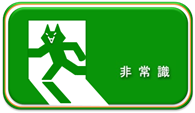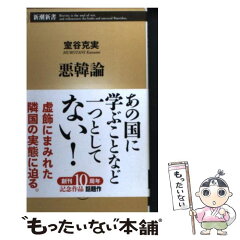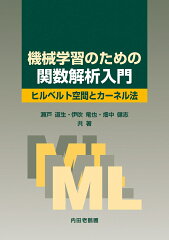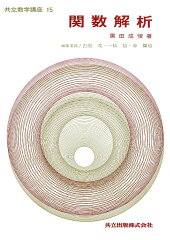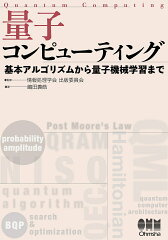digestive system
pulmonary circulation/systemic circulation
pulmonary circulation
Right ventricle �� pulmonary artery �� lung �� gas exchange in capillaries surrounding alveoli �� artery �� left atrium
systemic circulation
Left ventricle �� aorta/carotid artery �� systemic tissues and organs �� capillaries �� vena cava �� right atrium
atrium
The atrium is the chamber that receives blood. The right atrium has openings such as the superior vena cava, inferior vena cava, and coronary sinus, and the left atrium receives two pulmonary veins from the left and right, receiving arterial blood from the lungs.
heart valves
Heart valves prevent the backflow of blood. The valve at the atrioventricular orifice is called the atrioventricular valve, and the valve at the atrioventricular orifice is called the fecal arteriosus. The tricuspid and mitral valves, which are atrioventricular valves, are made up of cusps. The aortic and pulmonary valves, which are fecal arteries, are made up of pocket-shaped semilunar valves. The atrioventricular valve opens when the ventricle dilates, while the arteriofecal valve opens when the ventricle contracts.
50-59
parts of the heart
sinoatrial node
atrioventricular node
his bundle
right leg
left leg
Purkinje fibers
coronary circulation
The two vessels that feed the heart are the ascending aorta, the right coronary artery and the left coronary artery.
What is coronary circulation
The right coronary artery supplies the right ventricle, the right atrium, the inferior wall of the left ventricle, and a portion of the posterior interventricular septum, while the left coronary artery supplies most of the left ventricle, the left atrium, and more than half of the interventricular septum.
Coronary blood travels through capillaries in the myocardium, collects in the coronary sinus, and returns to the right atrium.
stimulus generator
Since the stimulus generator of the stimulus conduction system is inside the heart, the heart has the ability to contract independently.
This is called heart autofunction.
Furthermore, the heart is innervated by sympathetic nerves and parasympathetic nerves, which control heart rate, heart rate, heart contraction force, and stimulation conduction velocity.
digestive system
Digestive organ
gastrointestinal tract
upper gastrointestinal tract, esophagus, stomach, duodenum
lower gastrointestinal tract, small intestine, ileum, jejunum
large intestine, cecum, colon, rectum
liver
gall bladder
pancreas
digestive system
The portal vein is a vein that collects blood from the intestinal system and sends it to the liver. A part of the esophagus, stomach, small intestine, large intestine, and other intestinal tracts absorb water and components, which are then sent to the liver to be detoxified and resynthesized into systemic circulation.
The function of the esophagus is to pass and transport food, but not to digest or absorb it. Food is swallowed by relaxation of the ostial sphincter, reaches the esophageal hiatus in the diaphragm, and enters the stomach by relaxation of the lower esophageal sphincter.
The stomach connects to the esophagus at the cardia and to the duodenum at the pylorus. It is covered with a columnar epithelium, which contains the cardiac line, the fundic gland, and the pyloric line, and secretes gastric fluid.
The gastric cardia is near the cardia and contains mucous cells. The fundic gland has parietal cells that secrete hydrochloric acid and chief cells that secrete pepsinogen. The pyloric gland secretes gastrin and alkaline mucus.
The functions of the stomach and duodenum are digestion of food by gastric juice and movement of the walls of the stomach and duodenum, and defense against entry of harmful substances into the body by secretion of gastric acid.The gastric wall secretes strongly acidic gastric juice, and the duodenal secretory glands secrete alkaline mucus to neutralize gastric acid.
The duodenum is attached and fixed to the posterior wall of the abdominal cavity. It does not have a mesentery and has a raised papilla on the inner surface of the descending part, where the common bile duct and the pancreatic duct converge and open.
87,88
The upper limb is roughly divided into the clavicle and scapula, which are skeletons of the upper limb girdle that are important for connecting to the trunk, and the free upper limb bones included in the upper limb in appearance.
The free upper limb bones are divided into the humerus, which is the upper arm bone, the radius, ulna, and hand bones, which are the bones of the forearm, from the side closer to the trunk.
The upper arm has biceps brachii and brachial muscles as flexors, and triceps brachii as extensors. The forearm flexors and extensors are primarily used to move the wrist and fingers.
2-89,90
The lower limb consists of the lower limb girdle that supports it and the free lower limb that extends from it. The lower limb girdle forms the pelvis, and the femur consists of the ilium, pubic bone, ischium, and coxal bone. The left and right femur and sacrum are joined together to form the lower leg. The femur consists of the tibia and the lower leg consists of the fibula.
The lower limb consists of the lower limb girdle that supports it and the free lower limb extending from it. The lower limb girdle forms the pelvis, and the femur consists of the ilium, pubis, ischium, and coxal bone. The left and right femur and sacrum are joined together to form the lower leg. The hip joint is the part where the head of the femur enters the acetabulum, which consists of the tibia of the femur and the fibula of the lower leg.
It is the muscles near the superficial layer that move the hip joint, and the muscles that extend posteriorly are the large renal muscles. The knee joint is created between the lower end of the femur and the upper end of the tibia and is a function of flexion and extension, with the quadriceps femoris muscle being an important part. The triceps surae muscle is involved in ankle movement.
Genital
Female reproductive organs consist of the vagina, uterus, fallopian tubes, and ovaries, and ovulation takes place from mature cells. Fertilization takes place in the fallopian tube, and the fertilized egg moves to the uterus where it implants and develops.
The ovary secretes two hormones: estrogen, which is an estrogenic hormone secreted during the endometrial growth phase, and progesterone, which is a luteinizing hormone secreted during the endometrial secretory phase.
Sperm are produced in the testicular epithelium and transported from the vas deferens to the seminal vesicles for storage. It is ejaculated from the ejaculation duct through the urethra by excitement. Testicles secrete testosterone, a type of androgen, which is a male sex hormone.
61-69
The colon is segmentally constricted by bulges and constrictions and divided into four parts: the ascending colon, transverse colon, descending colon, and sigmoid colon. The ascending and descending colons of the colon are fixed to the retroperitoneum. The transverse colon and sigmoid colon have a mesocolon, but they are not fixed and are highly mobile. The colon differs from the small intestine in that it has three colonic cords that run longitudinally along its outer surface and is segmentally constricted to form the colonic bulge.
Small intestine
The functions of the small intestine are digestion and absorption. Digestion in the small intestine takes place with digestive enzymes from pancreatic juice and bile acids in bile.
The small intestine is an intraperitoneal organ that extends to the ileocecal valve with a total length of just under 7 meters. The first two-fifths are called the jejunum and the remaining three-fifths are called the ileum, supported by the mesentery. Kerkling is well developed in the ileum.
[Digestive pathway]
�EProtein��Pepsin�ETrypsin��Peptide�EAmino acid
�ENeutral fat �� lipase �� free fatty acid �EMonoglyceride �� bile salt �� complex micelle
�ECarbohydrate��Amylase��Oligosaccharide�EMaltose��Maltase��Monosaccharide
Large intestine
The large intestine refers to the intestine from the ileocecal valve to the anus, and is a hollow organ about 1.7 meters long, consisting of the cecum, colon, and rectum.
About 5 to 8 L of water is secreted as digestive juice in the digestive tract per day. Including the water ingested as food and drinking water, 95% is absorbed in the small intestine, 4% in the large intestine, and the remaining 1% is excreted in the feces.
Lactobacilli and enterococci that produce lactic acid are present in the large and small intestines and inhibit the growth of various bacteria and pathogenic bacteria. Vitamins K2 and B12 are synthesized and absorbed by Escherichia coli in the ileum. In addition, pyrrubin is reduced to urobilinogen by intestinal bacteria, about 1% of it is reabsorbed, and bile salts are degraded to bile acids, which are reabsorbed. This is called enterohepatic circulation.
Liver function
The liver is the largest organ in the human body and weighs 1200g. It is divided into the right and left lobes by the country line connecting the inferior vena cava and the lower gallbladder. From the distribution area of ??the internal vascular system biliary system, the right lobe is divided into anterior and posterior segments, and the left lobe into medial and lateral segments. The liver is also served by both the portal vein and the arterial system.
gallbladder function
The gallbladder is about 8 cm long and has a volume of about 70 mL, and is connected to the bile duct by the cystic duct. A bile produced in the liver is temporarily stored in the gallbladder, where water and salts are absorbed to form thick B bile.
When food enters the duodenum, the gallbladder contracts and expels bile, which mainly breaks down fat. Some gallbladders are fixed to the underside of the liver.
function of the pancreas
The exocrine function of the pancreas is to secrete pancreatic juice, such as proteolytic enzymes, from the main pancreatic duct through the papilla Vater into the duodenum. As for the endocrine function, a group of cells called islets of Langerhans are scattered in the pancreas, and the alpha cells within them secrete glucagon, which raises blood glucose, and the beta cells secrete hormones such as insulin, which lowers blood glucose.
The pancreas is a digestive organ that runs laterally in the retroperitoneal cavity behind the stomach, and consists of the pancreatic head, the pancreatic body, and the pancreatic tail. The pancreatic head is in contact with the duodenum, and the main pancreatic duct joins the common bile duct that passes through the pancreas and opens into the duodenum papilla Vater.
peritoneum
The peritoneum is an elastic fibrous connective tissue serosa that lines the inner surface of the abdominal cavity and the outer surface of the abdominal organs. It is a covering membrane and has functions of absorptive, adhesive, sensory, organ-protective, exudative and concentration functions.
kidney
The kidneys are a pair of organs in the retroperitoneal space located on either side of the spinal column between the 12th and 3rd thoracic vertebrae. The right kidney is hypopyramidal compared to the left kidney. Urine is produced in the kidney, and its structural unit is called the nephron, which consists of the renal corpuscle and tubules in the renal cortex.
The renal corpuscle is composed of glomerular capillaries (glomeruli) and Bowman�fs capsule that envelops them. One afferent arteriole enters the glomerulus, which branches into capillaries inside to form one efferent arteriole. an artery emerges. The glomerulus is composed of mesangial cells, endothelial cells, basement membrane, glomerular epithelial cells, and Bowman�fs capsule epithelial cells, among which the filtering function is composed of the basement membrane, endothelial cells, and glomerular epithelial cells.
The primary urine filtered by the glomerulus is stored in Bowma�fs capsule, flows from the proximal renal tubule to the Hees loop and the distal renal tubule and joins the collecting duct. . 99% of the original urine is reabsorbed in this process.
glomerulus
Amino acids, water, glucose, and sodium are reabsorbed in the proximal renal tubule, and in the distal renal tubule, antidiuretic hormone promotes reabsorption by increasing water permeability in the collecting duct. Glomerular mesangial cells regulate glomerular function by maintaining glomerular capillaries and secreting active substances.
Glomerular
Amino acids, water, glucose, and sodium are reabsorbed in the proximal renal tubule, and in the distal renal tubule, antidiuretic hormone promotes reabsorption by increasing water permeability in the collecting duct. Glomerular mesangial cells regulate glomerular function by maintaining glomerular capillaries and secreting active substances.
There is a size barrier that does not filter immunoglobulins and blood cells with large molecular weights, and primary urine produced by filtering blood is the same as plasma except for the protein concentration.
2-91
Hormones have target organs and target cells, and there are receptors there, which are designed to accept only certain hormones. Receptors may be membrane or cytoplasmic. Upon receiving stimuli such as stress, CHR is secreted from the hypothalamus, ACTH is secreted from the anterior pituitary gland, and cortisol is secreted from the adrenal cortex, which acts on target cells. When the cortisol concentration in the blood becomes too high, secretion from the hypothalamus and the anterior pituitary gland is suppressed, thereby maintaining the blood concentration of the adrenocortical hormone at a constant level, which is called a negative feedback mechanism.
In addition, the secretion is regulated by the autonomic nerves of the endocrine system.
2-93,92
endocrine test
The renin provocation test measures plasma renin activity, but primary aldosteronism does not increase changes in values.
Serum cortisol measurements, dexamethasone suppression test, and metopirone test are used to differentiate Cushing�fs syndrome.
Serum aldosterone measurements are elevated in primary and secondary aldosteronism.
Glucose is used for GH suppression test, and GRH and TRH are used for secretion stimulation test. The posterior lobe of the pituitary is used for the pitressin test to distinguish between nephrogenic diabetes insipidus and psychogenic polyuria, and for measuring the basal level of oxytocin.
Antimicrosomal thyroglobulin replacement tests are positive in chronic thyroiditis and Graves�f disease.
The Ellsworth-Howard test is used to differentiate between pseudohypoparathyroidism and hypoparathyroidism.
Anti-TSH receptor antibody test is positive in more than 90% of untreated Graves�f disease.
Among the functions of the kidney, there are the angiotensin, renin, and aldosterone systems. Renin is secreted from renin-secreting cells at the end of the afferent arteriole, which reduces the intrarenal pressure in the afferent arteriole and decreases the chlorine concentration in the renal tubule (proximal urinary Increased reabsorption of sodium chloride in the tubules) stimulates its secretion. Renin acts on angiotensinogen produced in the liver and converts it into angiotensin 1, which is further converted into angiotensin 2 by an enzyme called ACE present in renal tubules, exhibiting a strong effect.
The role of angiotensin 2 is to contract arteriole smooth muscle, increase blood pressure, and promote aldosterone secretion from the adrenal cortex. Furthermore, the role of aldosterone is to act on the distal renal tubules to promote sodium reabsorption and potassium excretion, as well as water reabsorption.
The functions of the renal tubules include hormone secretion and hormone activation. It acts on erythroid progenitor cells in the bone marrow to secrete erythropoietin, which stimulates bone marrow hematopoiesis, and activates vitamin D3, which enhances Ca absorption in the renal tubules and intestinal tract. In addition, aldosterone, which promotes sodium reabsorption and potassium excretion, is an antidiuretic hormone that increases sodium reabsorption and water reabsorption as hormones that act on the kidneys. have thyroid hormones.
Hormone structures include peptide hormones, steroid hormones, amino acids, and amines. Peptide hormones include pituitary hormones, insulin, hypothalamic hormones, and parathyroid hormones.
Steroid hormones include sex hormones and adrenocortical hormones.
Amino acids and amines include catecholamines and thyroid hormones.



